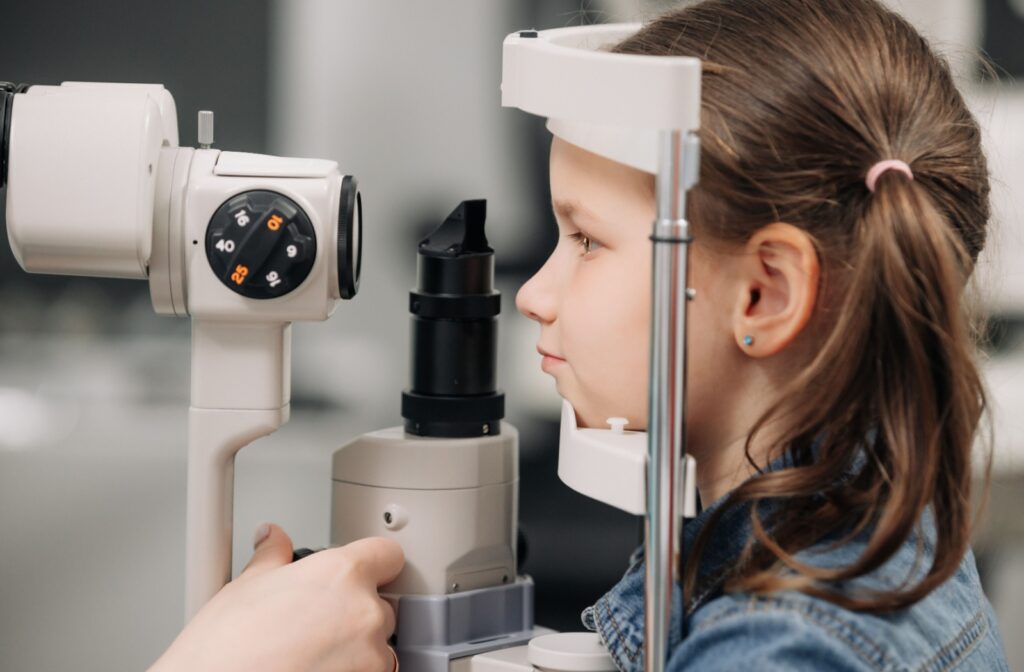Your eyes are working hard for you every day, helping you read, drive, scroll, and connect with the world around you. But when was the last time you gave them the care they deserve? A comprehensive eye exam is a full check-up of your vision and eye health designed to detect issues early, even before symptoms appear. It’s more than just reading an eye chart; it’s a proactive way to safeguard your eyesight and overall wellness.
Let’s break down what a comprehensive eye exam includes, who should get one, and why it might matter more than you think.
Why Are Comprehensive Eye Exams Important?
Routine eye exams do much more than check how well you see. They give your optometrist a clear picture of your overall eye health, and even your general health. Many eye conditions, like glaucoma, macular degeneration, and diabetic eye disease, don’t show early symptoms. That means people can live with them for months or even years without knowing something is wrong.
Regular exams allow eye doctors to catch these conditions early, when treatment can be more effective. Eye exams can also detect signs of other health concerns, such as high blood pressure, diabetes, and even certain types of cancer. Your eyes are often the first place signs of systemic diseases appear, making your annual eye exam an essential part of preventive health care.
And let’s not forget about kids. Children rely on their developing vision for learning, playing, and socializing. Undiagnosed vision issues can lead to difficulty in school or behavioural challenges. A child’s first eye exam should happen around 6 months of age, with follow-ups as recommended by their optometrist.
What to Expect During a Comprehensive Eye Exam
If you’ve never had a full eye exam before, don’t worry—it’s a straightforward and comfortable process. The appointment typically lasts between 30–60 minutes, depending on your specific needs. Here’s what you can expect:
1. Personal & Medical History
The exam begins with a conversation. Your optometrist will ask about your overall health, any current medications, your vision concerns, and your family’s eye health history. This helps identify risk factors and tailor the exam to your needs.
2. Visual Acuity Test
You’ll read from a standardized eye chart. This measures how clearly you can see at various distances and helps determine if you need glasses or contacts.
3. Refraction Assessment
Using a device called a phoropter, your optometrist will fine-tune your vision prescription. You’ll compare different lens options and tell them which looks clearer: “1 or 2?” This helps pinpoint the exact correction needed for nearsightedness, farsightedness, or astigmatism.
4. Eye Coordination & Muscle Tests
Your eye doctor will check how well your eyes work together, which is important for depth perception, focus, and eye alignment. Any issues here can lead to headaches or eye strain.
5. Eye Pressure Check
Our technology for measuring eye pressure is quick, gentle, and typically feels like just a slight tickle in the eye; no more puff of air. This test helps detect early signs of glaucoma, a serious condition that can damage your optic nerve.
6. Retinal Imaging & Eye Health Evaluation
At Eye Lab, our optometrist will examine the internal structures of your eyes using advanced imaging technology, called a Wellness Scan. This high-resolution retinal imaging technology captures detailed pictures of the back of your eye, including a glaucoma report, macula report, and retina report.
Unlike traditional dilation, this imaging doesn’t require eye drops, so you can avoid the blurred vision and light sensitivity that typically last for 4–6 hours.
After the exam, your optometrist will review the results with you, answer your questions, and offer recommendations, whether that’s a new prescription, treatment, or simply booking your next annual visit.
How Often Should You Have a Comprehensive Eye Exam?
Your age, health, and vision needs all affect how often you should have an eye exam. As a general guideline:
- Children: First eye exam between 6-12 months, then again between the ages of 3-5. Afterwards, we recommend annual exams, or more frequently if advised by the doctor.
- Adults (18–64): Every 1–2 years, or annually if you wear glasses or contacts.
- Adults 65+: Annual exams are recommended, as the risk for age-related eye conditions increases.
- High-risk groups: If you have diabetes, high blood pressure, a family history of eye disease, or are taking medications with vision side effects, you may need more frequent exams.

Staying consistent with your eye exams helps you catch potential problems early and keeps your prescription up to date. Plus, it gives you peace of mind knowing your eyes are healthy.
Invest in Your Vision Today
A comprehensive eye exam is one of the simplest ways to take control of your eye health and overall well-being. Whether you’re noticing vision changes, managing an existing condition, or just staying on top of preventive care, making time for your eyes is always worth it.
At Eye Lab in Scottsdale, AZ, we believe eye care should be comfortable, educational, and empowering. Our team takes the time to understand your lifestyle, your goals, and your concerns, so we can deliver personalized, expert care that helps you see your best. Schedule your comprehensive eye exam with us today and take the first step toward lifelong healthy vision.





